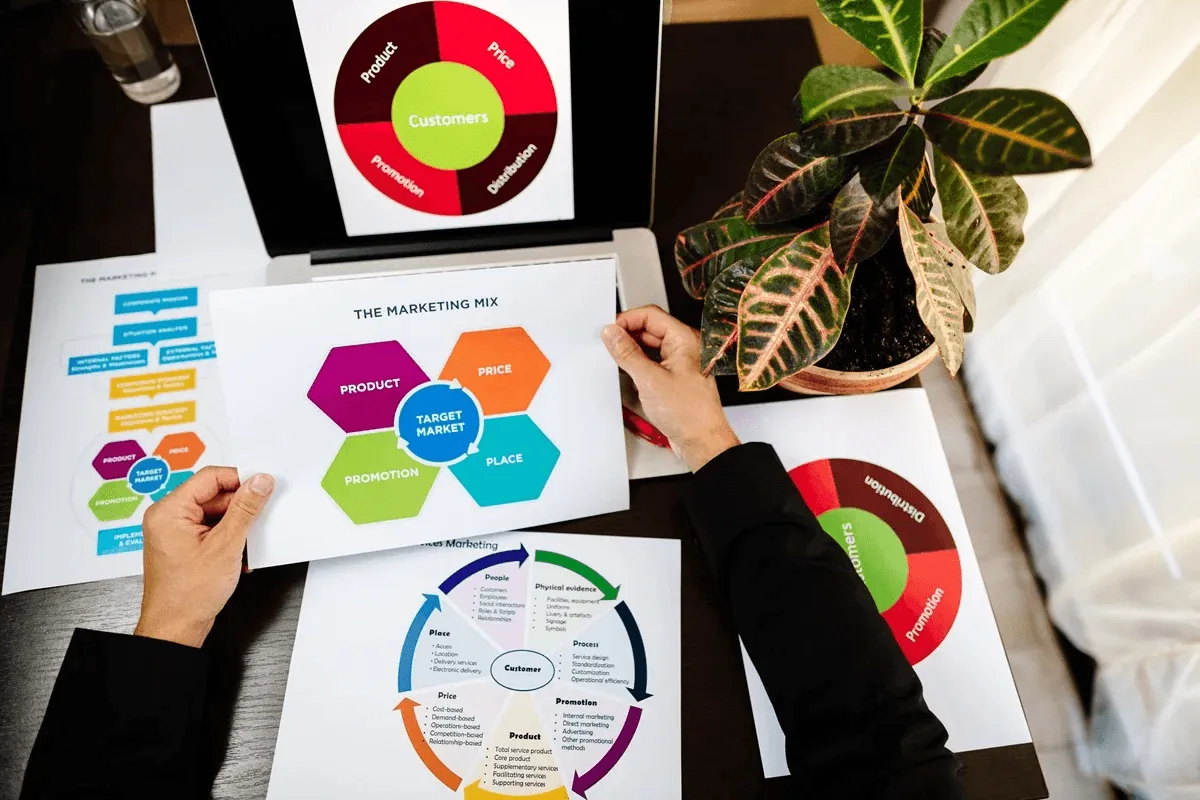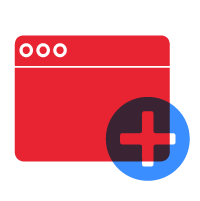Customer service has become more than just answering queries or resolving complaints. It’s now a vital element that influences customer satisfaction, brand loyalty, and long-term business growth. Businesses of all sizes—from startups to multinational corporations—are investing in customer service not only as a reactive function but also as a proactive driver of value.
At the heart of an efficient customer service strategy lies one crucial component: the customer service workflow. This acts as the backbone of support operations, defining how service requests are managed, escalated, and resolved.
This blog will explore customer service workflows in depth—what they are, why they matter, how to design them effectively, and the tools and strategies you can use to optimize them.

What is a Customer Service Workflow?
A customer service workflow is a predefined process that outlines the steps taken to manage and resolve customer interactions, from initial contact to resolution. Think of it as a roadmap that ensures every query follows a consistent path, minimizing guesswork and confusion for support teams.
Workflows can be linear (with clear sequential steps) or dynamic (with decision points and branching paths depending on customer needs). They can also vary depending on the support channel—email, live chat, social media, phone calls, or self-service platforms.
For example, a workflow for handling a refund request might look like this:
- Customer submits a refund request via email or chat.
- The system logs the ticket and assigns it to the appropriate support agent.
- The agent verifies eligibility based on company policies.
- If eligible, the agent initiates the refund process and confirms with the customer.
- If not eligible, the agent explains the reasons and offers alternative solutions.
- The ticket is marked as resolved and the customer receives a follow-up message.
This streamlined process prevents delays, avoids miscommunication, and ensures compliance with company policies.
Why Customer Service Workflows Matter
An organization’s ability to consistently deliver high-quality customer service largely depends on its workflows. Let’s examine the key reasons they matter:
Consistency in Customer Experience
Customers expect the same level of service regardless of which agent they contact. A standardized workflow ensures uniform handling of queries, so every interaction meets the company’s quality standards and strengthens customer trust.
Efficiency and Time Savings
Workflows provide clear guidance for each step of the support process, reducing unnecessary actions and guesswork. This allows agents to resolve issues more quickly and manage higher volumes of tickets efficiently.
Reduced Errors and Miscommunication
With clearly defined steps, agents are less likely to miss details or provide conflicting information. This structure leads to smoother interactions, fewer escalations, and a higher rate of first-contact resolutions.
Improved Agent Productivity and Morale
A clear workflow reduces uncertainty, helping agents focus on solving problems instead of figuring out processes. This boosts confidence, productivity, and overall job satisfaction.
Scalability for Growing Businesses
As customer inquiries increase, ad-hoc processes become inefficient. Well-designed workflows allow businesses to scale operations smoothly while maintaining consistent service quality.
Data-Driven Insights
Every workflow generates actionable data, from resolution times to recurring issues. Tracking this information helps managers identify bottlenecks, improve processes, and make informed decisions for continuous service enhancement.
Key Elements of an Effective Customer Service Workflow
Designing a workflow isn’t just about documenting steps; it requires careful thought about how interactions move from one stage to the next. Here are the essential components:
1. Intake and Categorization
The process begins when a customer contacts the business. Whether via phone, email, chat, or social media, the query must be logged and categorized. Categorization may include:
- Type of issue (billing, technical support, product inquiry).
- Priority level (urgent, normal, low).
- Customer profile (new, existing, VIP).
2. Routing and Assignment
Once categorized, the workflow should define how requests are routed. For example:
- Billing issues → Finance team.Technical issues → IT support.
- Escalated issues → Senior agents or managers.
Automation tools often play a big role here, ensuring faster response times.
3. Resolution Process
This is the core of the workflow where agents actively work on solving the customer’s issue. It should include:
- Verification steps (identity confirmation, order validation).
- Troubleshooting or providing solutions.
- Documentation of actions taken.
4. Escalation Protocols
Not all issues can be resolved at the frontline. Escalation rules should be clearly outlined—for example, when to involve a technical specialist or manager.
5. Closure and Feedback
After the issue is resolved, the agent should close the ticket and ideally request customer feedback. A closed-loop workflow ensures continuous improvement by gathering insights from real interactions.
6. Monitoring and Reporting
Regular monitoring of workflow performance helps identify bottlenecks, track KPIs (like average resolution time), and make data-driven adjustments.
Common Types of Customer Service Workflows
Different businesses require different workflows depending on their products, services, and customer needs. Here are some widely used ones:
1. Ticket Resolution Workflow
The most common workflow, where each customer issue is logged as a ticket and moves through clear stages: intake, assignment, resolution, and closure. This structure helps ensure nothing falls through the cracks and every case is properly documented.
2. Escalation Workflow
Used for complex issues that frontline agents cannot resolve, this workflow defines when and how cases are escalated to higher-level support or specialists. It helps maintain efficiency while ensuring customers receive the expertise they need.
3. Refund and Returns Workflow
This workflow standardizes the process for handling returns, exchanges, and refunds. Clear steps ensure compliance with company policies and provide a smooth, transparent experience for customers.
4. Complaint Management Workflow
Designed to protect brand reputation, this workflow outlines how complaints are acknowledged, investigated, and resolved. Follow-up communications are built into the process to ensure customers feel heard and valued.
5. Onboarding Workflow
For new customers, this workflow guides them through setup, product use, and initial support. A structured onboarding process improves adoption, reduces confusion, and creates a positive first impression.
6. Proactive Support Workflow
Rather than waiting for issues to arise, this workflow includes follow-ups, check-ins, and preventive troubleshooting. By anticipating customer needs, businesses can reduce ticket volumes and improve satisfaction.
How to Design a Customer Service Workflow
Creating an effective workflow requires balancing customer needs with business efficiency. A well-designed workflow ensures consistency, speeds up resolution, and improves both customer and agent experiences. Here’s a step-by-step guide:
Step 1: Map Customer Journeys
Begin by identifying all common customer touchpoints—from first contact to issue resolution. Mapping the journey helps you understand where customers may experience friction and which steps need the most attention.
Step 2: Define Key Stages
Break the journey into clear stages such as intake, triage, resolution, and closure. Specify the actions required at each stage, ensuring every agent knows exactly what to do to move the issue forward.
Step 3: Establish Rules and Priorities
Set criteria for prioritizing urgent issues, routing tickets to the right teams, and escalating unresolved matters. Clear rules help agents make quick decisions and keep workflows running smoothly.
Step 4: Involve Your Support Team
Frontline agents interact with customers daily and can provide valuable insights. Involving them in workflow design ensures the process is practical, realistic, and easier to follow.
Step 5: Automate Where Possible
Automation tools can take over repetitive tasks like ticket routing, sending acknowledgment emails, or updating statuses. This reduces manual work, speeds up resolution, and allows agents to focus on complex customer needs.
Step 6: Test and Refine
Before a full rollout, pilot the workflow with a small team or subset of tickets. Track metrics such as resolution time, customer satisfaction, and bottlenecks. Use these insights to refine and improve the workflow for broader implementation.
Related Article:
Boosting Your Business Through 14 Effective Customer Engagement Strategies
Discover 15 actionable customer engagement strategies to increase loyalty, drive sales, and strengthen brand relationships. Boost engagement effectively today!
Tools and Technologies for Workflow Management
In the digital age, manual workflows are quickly becoming outdated. Using the right tools can optimize your customer service processes and improve efficiency:
- Help Desk Software: Platforms like Zendesk, Freshdesk, and Help Scout streamline ticket management, automate repetitive tasks, and provide reporting features to track performance.
- CRM Systems: Customer Relationship Management tools such as Salesforce or HubSpot integrate customer data with support workflows, giving agents a complete view of customer history and interactions.
- Automation Tools: AI chatbots, automated ticket routing, and canned responses save time, reduce repetitive tasks, and allow agents to focus on more complex issues.
- Collaboration Tools: Platforms like Slack or Microsoft Teams integrate with support systems to improve internal communication, enabling teams to resolve issues faster and more efficiently.
- Analytics and Reporting Tools: Data-driven platforms provide insights into performance metrics, help identify workflow bottlenecks, and assist in forecasting staffing needs for better resource planning.
Best Practices for Customer Service Workflows
To get the most out of your customer service workflows, following best practices is essential.
Keep the Customer at the Center
Workflows should be designed with the customer experience as the top priority. While internal efficiency is important, processes should focus on making interactions smooth, convenient, and satisfying for customers. Prioritizing customer needs helps build loyalty and strengthens your brand reputation.
Maintain Flexibility
Although structure is necessary for consistency, it’s equally important to allow agents some discretion. Unique situations often arise that don’t fit neatly into predefined steps. Giving agents flexibility ensures they can handle exceptional cases effectively without slowing down the workflow.
Regularly Update Workflows
Customer expectations, product features, and company policies are constantly evolving. Workflows should be reviewed and updated periodically to reflect these changes. This ensures that processes remain relevant, efficient, and aligned with current business goals.
Invest in Training
Even the best-designed workflow cannot succeed if agents are not properly trained. Regular workshops, simulations, and refresher courses help employees understand procedures, stay updated on tools, and respond to customers confidently. Well-trained staff are more productive and provide a higher level of service.
Use Feedback Loops
Gathering feedback from customers at the end of interactions provides valuable insights into workflow effectiveness. This information can highlight areas for improvement, uncover recurring issues, and guide refinements that make the workflow more efficient and customer-friendly.
Monitor Key Metrics
Tracking important KPIs such as average response time, resolution rate, customer satisfaction (CSAT), and net promoter score (NPS) allows managers to measure workflow performance. Regular monitoring helps identify bottlenecks, recognize high-performing agents, and make data-driven adjustments to optimize the entire support process.
Challenges in Implementing Customer Service Workflows
Despite their benefits, workflows aren’t always easy to implement. Common challenges include:
- Resistance to Change: Agents who are used to existing processes may be hesitant to adopt new workflows, slowing down implementation and reducing effectiveness.
- Over-Automation: Relying too heavily on automation can make customer interactions feel robotic and impersonal, potentially harming the overall experience.
- Poor Workflow Design: Workflows that are too rigid or complex can create bottlenecks and delays, making resolution slower rather than more efficient.
- Integration Issues: Using multiple tools that don’t integrate properly can lead to inefficiencies, duplicate work, and frustration for agents.
- Scalability Problems: A workflow that works well for a small number of tickets may struggle to handle a high volume, requiring adjustments to accommodate business growth.
The key to overcoming these challenges lies in striking a balance between automation and personalization, keeping processes simple, and continuously refining workflows based on data and feedback.
Take Your Customer Service to the Next Level
Struggling to manage high volumes of customer inquiries or looking to improve efficiency and satisfaction? Outsourcing your customer support to our expert team can streamline your workflows, reduce response times, and deliver a consistent, high-quality experience to every customer. Let us handle your support operations so you can focus on growing your business.
Frequently Asked Questions
What is the difference between a workflow and a standard operating procedure (SOP) in customer service?
A workflow outlines the step-by-step process of handling customer interactions, often including automated paths and decision points. An SOP is a formal document detailing policies, guidelines, and rules for performing tasks. Workflows focus on “how” tasks flow, while SOPs explain “how” tasks should be done.
How often should customer service workflows be reviewed?
It’s best to review workflows at least quarterly or whenever there are significant changes to products, services, or customer expectations. Regular reviews ensure that processes stay relevant and efficient.
Can small businesses benefit from customer service workflows?
Absolutely. Even small teams benefit from workflows because they provide structure, reduce errors, and help deliver consistent service, allowing small businesses to compete with larger competitors.
How can workflows improve first-contact resolution rates?
By providing clear steps for categorizing, routing, and resolving issues, workflows guide agents to handle requests efficiently and correctly the first time, minimizing the need for follow-ups.
Are workflows useful for omnichannel support?
Yes. Workflows can be designed to handle multiple channels like email, chat, phone, and social media, ensuring that customers receive consistent service regardless of the channel they use.







